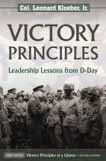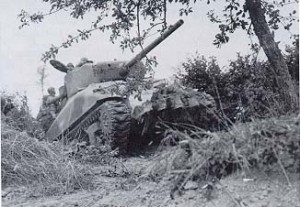Archive for the ‘Innovation and Learning’ Category
Learn from History: Innovation Leads to Success
War is one of the most tragic of all human endeavors when measured in loss of life and property, suffering of all the participants, and the cost of rebuilding after the final shot has been fired. In spite of the horrific consequences of war, it illustrates that even under the harshest of circumstances, innovation and learning are critical to survival and also essential ingredients to success. Students of history will understand that successful military operations have been the result of “learning on the fly.” Successful armies learn how to defeat the enemy by adapting to their tactics, by innovating new tactical solutions of their own, and by finding new ways to use the resources available. These same concepts of learning apply to success in business by adapting your competitor’s tactics and leveraging your own resources in the marketplace. While the analogy of war and business is not perfect, it does offer some valuable insights. Let’s look at the Normandy campaign in World War II as an example.
After the Allied armies had established a beachhead on the Normandy coast of France following the D-Day invasion on June 6th 1944, the fighting became protracted and intense in the Norman hedgerows. Many of the objectives that were expected to be achieved in the first few days were not actually realized until a month or more into the campaign as the fighting bogged down in the “Bocage” country. This was where farmers had raised their cattle and grown crops since before Norman the Conqueror had left the same area to sail across the English Channel almost 1000 years before. Over the centuries they had built natural fences from mounds of dirt where they planted shrubs and trees to form barriers of dense vegetation to separate their fields. These are known as hedgerows. Usually the hedgerows surrounded a field and only had a small opening from which you could enter the enclosed area. Hedgerows provided the Germans with natural defensive positions from which to defend against the advancing Allied armies. By strategically emplacing machine guns that targeted the entrances to these fields and also using pre-arranged artillery and mortar fire, they could easily slow down an Allied advance and inflict many casualties. Even tanks were vulnerable to attack when they penetrated the hedgerows through the natural openings and were hit by anti-tank weapons and artillery.
Then one day, Sergeant Curtis G. Culin of the American 102nd Cavalry, 2nd Armored Division decided that if he could weld some steel prongs on his tank, then he could literally plow through a hedgerow at an unexpected place quickly and avoid the pre-sited German fire. It worked! General Omar Bradley, then in command of the American army, ordered this adaptation be made to tanks in other units too. Ironically they were able to use the same steel girders that the Germans had used for beach obstacles as a source for the metal needed to modify the tanks. Thereafter, the Allied armies were able to more easily attack into the hedgerows with fewer casualties. This innovation and learning under fire saved American lives and contributed to the eventual defeat of the German army in Normandy. It is but one good example of how “learning on the fly” can lead to success, even where the concept is quiet simple and maybe even obvious once it is implemented.
This same concept of learning and innovation can also be applied to business. One of the industries that has thrived on innovation and learning to improve products and services is the fast food industry. Competitors in this industry constantly look for ways to do things easier, faster, and more reliably. You can find examples at McDonalds where they have used innovations over the years to cook their French Fries and hamburgers uniformly or make milk shakes quickly, or at Taco Bell where they have perfected the art of making a taco or enchilada. They have done this by designing kitchen equipment that is almost foolproof and produces similar results each time, even where their workers may have limited experience. Often these innovations come from their franchisees who have learned lessons the hard way and not from the corporate headquarters. So it is important for leaders to be alert and listening to those on the front lines, just as General Bradley listened to Sergeant Culin sixty five years ago.
Make learning and innovation a part of your organization. Experiment. Take small risks. Try new approaches. Small successes and innovations when taken together can have a huge impact on the bottom line and your overall results. If you are a leader, encourage this kind of behavior and make it a part of the organizational culture. Be careful not to stifle this activity by punishing failure. Often the experiments may not work, but when they do, the can have a big payoff. If you punish people who try and fail, word will get around quickly. Others will choose to play it safe and not look for ways to improve. So if you want to encourage innovation you need to positively encourage your people even when they fall short. Obviously, you should also celebrate success when someone tries and succeeds. Public recognition will also get the message across that you want to look for ways to improve. So start by looking for the small wins, and then build from there. Make innovation and learning a part of your success.

